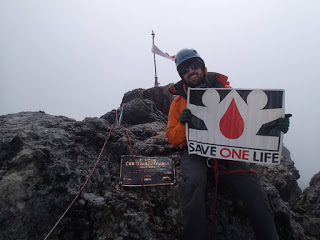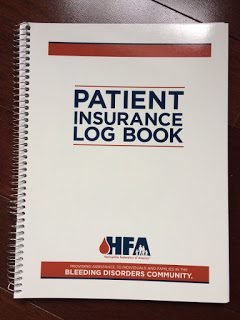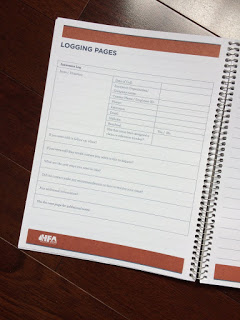What’s Your Everest?
 |
| Chris Bombardier on Carstenz Pyramid, one of the Seven Summits |
 |
| One of my hemo-heroes! |
 |
| Chris Bombardier on Carstenz Pyramid, one of the Seven Summits |
 |
| One of my hemo-heroes! |
The following content is sponsored by Bayer.
Discover the Brand New LivingWithHemophilia.com!
There is no community quite like the hemophilia community—which is why Bayer set out to create an online destination unlike any other.
Introducing the all-new LivingWithHemophilia.com, reinvented and reimagined to engage patients and caregivers like never before. This is where you’ll get the scoop on everything from the role of genetics, to information on pain management, to tips for traveling—and all things in between—with content that’s engaging, easy-to-find and relevant to you.
It’s the real talk you want, served up the way you want it. For example, the “Living With Hemophilia On Your Own Terms” video series is designed to help you understand often confusing terminology related to hemophilia—so you can feel more informed than ever.
LivingWithHemophilia.com is also home for information on Bayer Leadership U, the summer internship program for college-aged students touched by hemophilia. For more than a decade, Bayer has offered motivated, young individuals a paid, six-week internship at their U.S. headquarters in New Jersey. Leadership U interns participate in activities that sharpen leadership skills and apply these skills in a real-world corporate setting through a variety of independent projects.
For more information on the internship program, visit www.LivingWithHemophilia.com/lead. The application deadline has been extended and will be open until Wednesday, February 15, 2017.
So, that’s the story behind the all-new LivingWithHemophilia.com. Make sure you check it out!
The news was announced just three days ago: Biogen, maker of Eloctate and Alprolix, has spun off its hemophilia division, which has now become an entirely separate and new company called Bioverativ.
Biogen’s two revolutionary products, the first ones with a longer half-life, were game changers. Now there are a few more choices for longer half-life products, but these were the first and were rolled out with much fanfare. Then boom! Three years later, Biogen doesn’t want them anymore.
This is just a reminder to us patients that this is a marketplace, and we are consumers. And companies need to make business decisions—hence the “game.” As consumers, it’s up to us to understand how the game is played, and who are the players. The names have been changing, more rapidly than I can keep up with in the specialty pharmacy arena, and those are truly game changers.
In the factor concentrate manufacturing arena, we had two name changes just in the last few months: Biogen to Bioverativ, and Baxalta to Shire. But this has been happening for years in our community, so here’s a review. It’s worth knowing the players—of which YOU, the consumer, are the most important!
Remember Alpha? Those of you who use Alphanate or Alphanine may wonder why these drugs are called that when sold by the Spanish company Grifols. Simple: Grifols bought Alpha Therapeutics hemophilia therapies years ago and simply kept the drugs’ names the same. (It’s hard to change a drug’s name.) In 2011, Grifols also bought Talecris, making it the third-largest global manufacturer of plasma-derived therapies. Oh, and Talecris? It was a spin-off from Bayer, which didn’t want to keep plasma-therapies anymore. Bayer’s plasma-product Koate-DVI went to Talecris, and Bayer kept Kogenate FS. If you look at the Koate-DVI packaging, you’ll still see the Bayer primary color line around the box!
Baxter Healthcare produced factor concentrates like Recombinate, Advate, Hemofil M and FEIBA. It spun off its hemophilia division, which became an independent company called Baxalta. That didn’t last long. Shire, an Irish pharmaceutical company, liked what it saw and scooped it up. All the former Baxter/Baxalta products now belong to Shire.
The biggest name changer is CSL Behring. I knew it in 1987 as Armour Pharmaceutical. Then in 1996, Armour and Behringwerke (a Geman company) formed a joint venture known as Centeon. Things happen fast: in 1999, Centeon became Aventis Behring. Why? Armour’s parent companies (Rhone-Polenc Rorer and Hoechst) merged to become Aventis. Meanwhile, CSL (an Australian plasma therapies manufacturer) acquired ZLB Blood Transfusion Services. In 2004, CSL acquired Aventis Behring, to form ZLB Behring, later called CSL Behring.
(There’s a comprehensive timeline of this interesting company here.)
Genetics Institute: anyone remember that? They developed BeneFIX and ReFacto (no longer on the market). It evolved into Wyeth, and then was bought by pharma giant Pfizer Inc.
Bayer is one that seems to have stayed the same, but it’s had name changes too. Bayer bought Cutter Labs in 1978 and Miles Labs in 1979. In 1995, they all became Bayer. I think Novo Nordisk (Denmark) has stayed the same… so far!
And some companies dropped out altogether, like the American Red Cross. And new ones entered, like Octapharma (Switzerland) and Kedrion (Italy), tapped to distribute Koate DVI for Grifols. And Aptevo Therapeutics… oh, which was owned by Cangene (Canada) first, then Cangene was bought by Emergent Biosolutions in 2014! And they all originated from Inspirational Biopharmaceuticals, which in 2013 sold all its product rights to them, and dropped out of the game.
More passes than Tom Brady!
Whew! It’s amazing tracking the history of just the name changes: but we also need to know products. We are tracking who makes what on our website Hemophilia Factor Chart by Brand, available as a download. We are updating it all the time… a necessity to keep track of this ever-changing game, and business.
I can’t say I’ve kept everything from my past, but I’m pretty good at recording things. Part of that is the journalist in me, part of it is the economist I used to be. When my first child was born with hemophilia, it seemed natural to me to use a spreadsheet to record every single bleed and outcome, log in every single vial of factor with lot number and assay size, and record every single doctor’s visit. I thought everyone did that. Data is valuable.
 Data and documentation may also be your secret weapon in the new health care environment. None of us really knows yet how the new administration will affect the Affordable Care Act, but it’s trying to repeal it. While we wait for the dust to settle, the single best thing you can do right now, if you are not already doing it, is document everything. Every bleed. Every vial of factor. Every doctor’s visit. Every Explanation of Benefit (you are receiving them, right?). Every insurance paper. And above all, every phone call to your insurance company.
Data and documentation may also be your secret weapon in the new health care environment. None of us really knows yet how the new administration will affect the Affordable Care Act, but it’s trying to repeal it. While we wait for the dust to settle, the single best thing you can do right now, if you are not already doing it, is document everything. Every bleed. Every vial of factor. Every doctor’s visit. Every Explanation of Benefit (you are receiving them, right?). Every insurance paper. And above all, every phone call to your insurance company.
As someone who never documented phone calls, I learned the hard way how important this is. About 12 years ago some unsavory characters (not from the hemophilia community) had a business run-in with me and it required legal mediation. As my lawyer and I sat across from them and their lawyer, I was shocked, annoyed and impressed that they had documented every single phone call we had ever made, and were even quoting me! Even while I fumed, I thought, What a great idea. Note to self: document all calls.
 And so I do. It’s been helpful for recalling details, promises, and problems. It impresses people. It frees me up to not try to remember everything later on.
And so I do. It’s been helpful for recalling details, promises, and problems. It impresses people. It frees me up to not try to remember everything later on.
You don’t need to document to impress people, but you will be glad if you document your insurance calls. You may one day need these notes to waive a fee, to get a reimbursement, or to file a complaint. Something tells me we’re in for a lot of patient complaints down the road!
Hemophilia Federation of America has made documentation easier. Their Patient Insurance Log Book has pages already set up for you to log in calls. And at the end of the book is a complete glossary of insurance terms, and even the procedures to file a complaint for each of the major insurance companies!
So get your secret weapon ready: order a Patient Insurance Log Book and record everything regarding insurance. It can save time—and money—someday.
Order the Patient Insurance Log Book at www.hemophiliafed.org or call 800-230-9797.
I recall in 2008 we hit the road to present our symposia “Pulse on the Road” to several states each year, to alert our community to the coming insurance reform. In 2009 so many audiences we met with had no clue what was about to happen. Insurance caps, copays, tiers, PBMs, formularies, Medicaid changes, preauthorization—this was all new stuff. Around 2011, we noticed a marked change. Audiences were picking up all the terms and concepts. Why? They were beginning to experience the changes. Some of the changes were brilliant: no caps! You could get as much factor as you needed. No pre-existing conditions! Really, anyone with hemophilia should be able to get insurance. And limits to out-of-pocket costs. The Medicaid expansion gave people in some states eligibility. Millions of people accessed healthcare that didn’t have it before.
But the “affordable” in Affordable Care Act was always suspect to me. Who was going to pay for these changes? No annual caps and no lifetime limits meant we could get the drugs we needed, a blessing for those with chronic disorders. The parents of children with hemophilia who burned through $1 million of coverage in a few years would have had to change insurance or change jobs even. Some parents simply couldn’t do that. Now, no longer, thanks to the ACA.
But we saw that insurance companies—payers—were being hit with the skyrocketing costs as a result. Their countermove was not surprising: cost-shifting to consumers. This manifested in different ways: restriction of choice. You suddenly couldn’t get the specialty pharmacy you wanted. Next came restrictions of drugs to a formulary. You could get factor but maybe not the one you want. Higher copays—way higher. Higher premiums. The benefits that seemed so great suddenly had a consequence that bit into our disposable income while restricting access to some of the therapies we wanted.
The ACA became a double-edged sword. Payers were fighting back.
While we wait, the best advice our Pulse on the Road team kept giving our audiences in these truly uncertain times:
1. Read your insurance plan every year at enrollment time. So much is changing so fast, and you must know the print, and the fine print. Don’t ever assume that just because you have the same employer, same insurer and same plan, things are staying the same.
2. Calculate annual out-of-pocket costs. You need to have a few thousand saved up just to cover rising coinsurance, copays and deductibles.
3. Sign up for your factor manufacturer’s co-pay assistance program. They all have them, and from what the manufacturers tell me, a lot of people in the bleeding disorder community are not taking advantage of them. Big mistake!
4. Sign up for a free factor program. You can get limited free trial doses of a different product from what you are on; or your factor manufacturer may have a compassionate program to keep you, the loyal customer, with factor until you can get insurance to cover you.
5. Talk to your social worker at your HTC and/or your state hemophilia organization to get up-to-date information about what’s happening in your state, with your plan.
It’s going to be an uncertain time for a while, but the bleeding disorder community is one of the best medical patient communities for advocating for its needs, and for keeping informed. Sign up at www.hemophilia.org or www.hemophiliafed.org for current news about the ACA, and health care reform and repeal as it relates to bleeding disorders.
Would you like to be added to our email list to continue to recieve future editions of PEN in PDF format?
Yes: No:
Please share your location to continue.
Check our help guide for more info.

